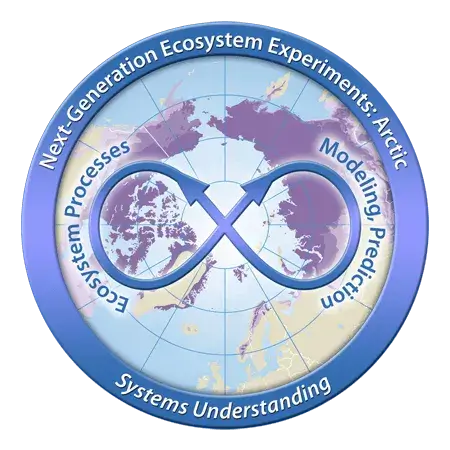Zhang, Lijie, et al. “Unravelling Biogeochemical Drivers of Methylmercury Production in an Arctic Fen Soil and a Bog Soil”. Environmental Pollution, vol. 299, 2022, p. 118878, https://doi.org/10.1016/j.envpol.2022.118878.
Publications
Displaying 81 - 100 of 355
By year of publication, then alphabetical by title
- Abbott, Benjamin W., et al. “We Must Stop Fossil Fuel Emissions to Protect Permafrost Ecosystems”. Frontiers in Environmental Science, vol. 10, 2022, https://doi.org/10.3389/fenvs.2022.889428.
- Mekonnen, Zelalem A, et al. “Wildfire Exacerbates High-Latitude Soil Carbon Losses from Climate Warming”. Environmental Research Letters, vol. 17, no. 9, 2022, p. 094037, https://doi.org/10.1088/1748-9326/ac8be6.
- Burnett, Angela C., et al. “A Best-Practice Guide to Predicting Plant Traits from Leaf-Level Hyperspectral Data Using Partial Least Squares Regression”. Journal of Experimental Botany, vol. 72, no. 18, 2021, pp. 6175-89, https://doi.org/10.1093/jxb/erab295.
- Ely, Kim S., et al. “A Reporting Format for Leaf-Level Gas Exchange Data and Metadata”. Ecological Informatics, vol. 61, 2021, p. 101232, https://doi.org/10.1016/j.ecoinf.2021.101232.
- Clayton, Leah K., et al. “Active Layer Thickness As a Function of Soil Water Content”. Environmental Research Letters, vol. 16, no. 5, 2021, p. 055028, https://doi.org/10.1088/1748-9326/abfa4c.
- Glade, Rachel C., et al. “Arctic Soil Patterns Analogous to Fluid Instabilities”. Proceedings of the National Academy of Sciences, vol. 118, no. 21, 2021, https://doi.org/10.1073/pnas.2101255118.
- Mekonnen, Zelalem A., et al. “Arctic Tundra Shrubification: A Review of Mechanisms and Impacts on Ecosystem Carbon Balance”. Environmental Research Letters, vol. 16, no. 5, 2021, p. 053001, https://doi.org/10.1088/1748-9326/abf28b.
- Fer, Istem, et al. “Beyond Ecosystem Modeling: A Roadmap to Community Cyberinfrastructure for Ecological data‐model Integration”. Global Change Biology, vol. 27, no. 1, 2021, pp. 13-26, https://doi.org/10.1111/gcb.15409.
- Mekonnen, Zelalem A., et al. “Changes in Precipitation and Air Temperature Contribute Comparably to Permafrost Degradation in a Warmer Climate”. Environmental Research Letters, vol. 16, no. 2, 2021, p. 024008, https://doi.org/10.1088/1748-9326/abc444.
- Tang, Jinyun Y., et al. “Conceptualizing Biogeochemical Reactions With an Ohm’s Law Analogy”. Journal of Advances in Modeling Earth Systems, vol. 13, no. 10, 2021, https://doi.org/10.1029/2021MS002469.
- Schneider von Deimling, Thomas, et al. “Consequences of Permafrost Degradation for Arctic Infrastructure – Bridging the Model Gap Between Regional and Engineering Scales”. The Cryosphere, vol. 15, no. 5, 2021, pp. 2451-7, https://doi.org/10.5194/tc-15-2451-2021.
- Hollingsworth, Teresa N., et al. “Does Fire Always Accelerate Shrub Expansion in Arctic Tundra? Examining a Novel Grass-Dominated Successional Trajectory on the Seward Peninsula”. Arctic, Antarctic, and Alpine Research, vol. 53, no. 1, 2021, pp. 93-109, https://doi.org/10.1080/15230430.2021.1899562.
- Chen, Yang, et al. “Future Increases in Arctic Lightning and Fire Risk for Permafrost Carbon”. Nature Climate Change, vol. 11, no. 5, 2021, pp. 404-10, https://doi.org/10.1038/s41558-021-01011-y.
- Uhlemann, Sebastian, et al. “Geophysical Monitoring Shows That Spatial Heterogeneity in Thermohydrological Dynamics Reshapes a Transitional Permafrost System”. Geophysical Research Letters, vol. 48, no. 6, 2021, https://doi.org/10.1029/2020GL091149.
- Wainwright, Haruko M., et al. “High-Resolution Spatio-Temporal Estimation of Net Ecosystem Exchange in Ice-Wedge Polygon Tundra Using In Situ Sensors and Remote Sensing Data”. Land, vol. 10, no. 7, 2021, p. 722, https://doi.org/10.3390/land10070722.
- Dengel, Sigrid, et al. “Influence of Tundra Polygon Type and Climate Variability on Carbon Dioxide and Methane Fluxes Near Utqiagvik, Alaska”. Journal of Geophysical Research: Biogeosciences, vol. 126, no. 12, 2021, https://doi.org/10.1029/2021JG006262.
- Sulman, Benjamin N., et al. “Integrating Arctic Plant Functional Types in a Land Surface Model Using Above‐ and Belowground Field Observations”. Journal of Advances in Modeling Earth Systems, vol. 13, no. 4, 2021, https://doi.org/10.1029/2020MS002396.
- Yang, Dedi, et al. “Landscape-Scale Characterization of Arctic Tundra Vegetation Composition, Structure, and Function With a Multi-Sensor Unoccupied Aerial System”. Environmental Research Letters, vol. 16, no. 8, 2021, p. 085005, https://doi.org/10.1088/1748-9326/ac1291.
- Cawse-Nicholson, Kerry, et al. “NASA’s Surface Biology and Geology Designated Observable: A Perspective on Surface Imaging Algorithms”. Remote Sensing of Environment, vol. 257, 2021, p. 112349, https://doi.org/10.1016/j.rse.2021.112349.

